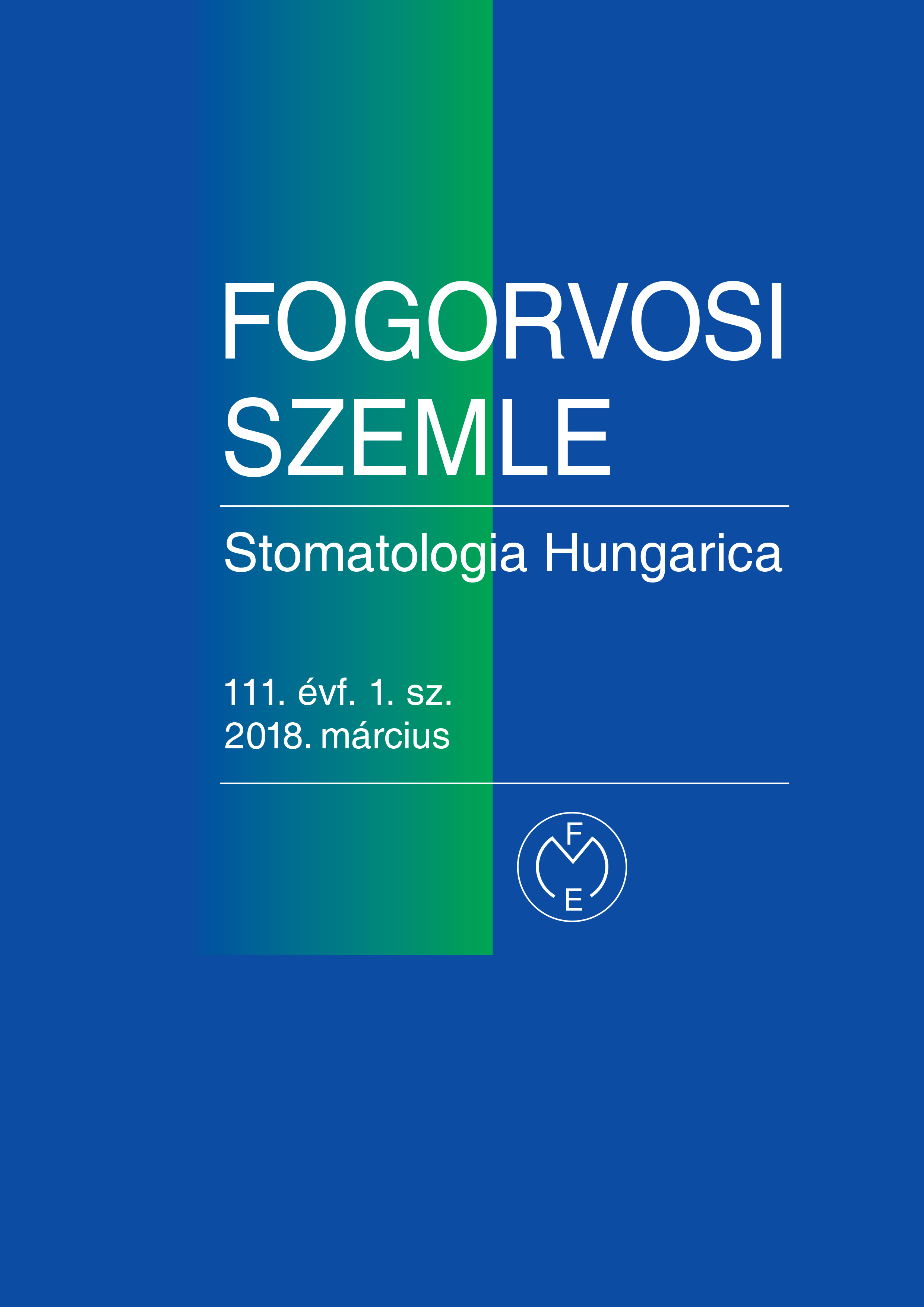Frequency of temporomandibular joint disorder in patients with Parkinson’s disease
Pilot study
Abstract
In Parkinson’s disease the involuntary movements, tremor and the rigidity of the muscles may result in orofacial pain or temporomandibular joint disorder. The aim of our study was to examine if temporomandibular (TM) dysfunction occurs more often in these patients than in healthy subjects. 13 patients treated for Parkinson’s disease belonged to the case group; average age was 64,77 ± 5,81. Controls were selected from the out-patients of the Prosthetic Department/University of Pécs/Hungary (n = 13, average age: 53,69 ± 4,38). The Helkimo index was used for the assessment of the TM dysfunction. According to the anamnestic component the Ai0 was higher in case of the control group (control group: 76,92%, Parkinson group: 61,54%). 30,77% of the control group and 15,38% of the Parkinson group had no clinical sign of TM dysfunction. Mild dysfunction was found in 46,15% of the controls and 38,5% of the Parkinson’s patients. Moderate symptoms (DiII) were found in 46,15% in the Parkinson patients’ group, while it occurred only 23,08% among the controls. Although a small number of patients participated in the in the pilot study, the results support the hypotheses that TM dysfunction may occur more frequently among patients with Parkinson disease.
Copyright (c) 2021 Authors

This work is licensed under a Creative Commons Attribution 4.0 International License.


.png)




1.png)



